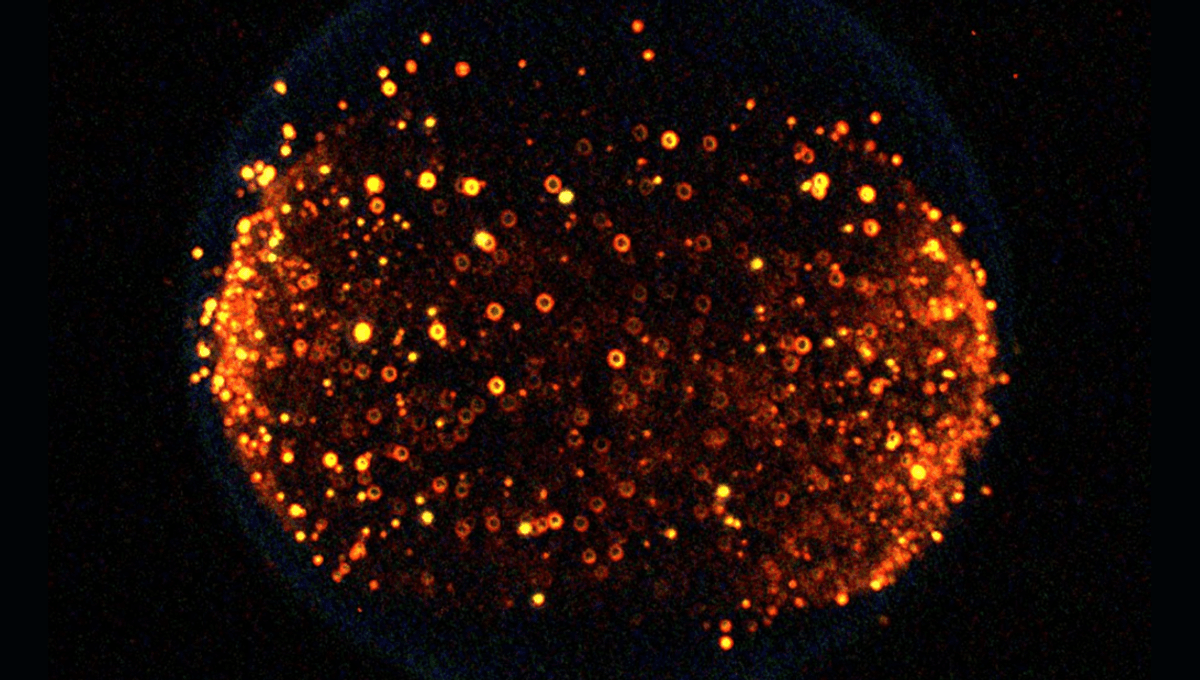
On Earth, flames are shaped by gravity. Hot gases from the flames rise while gravity pulls cooler and denser air downwards to the bottom of the flame, giving it its familiar teardrop shape.
In microgravity environments – such as on the International Space Station (ISS) – this cycle does not take place, and the result is that the flame becomes spherical. Astronauts aboard China’s Tiangong space station lit a candle onboard to demonstrate how flames act in zero gravity. You can watch Chinese astronauts Gui Haichao and Zhu Yangzhu light the candle while live-streaming a lecture to viewers down below.
While cool in a demonstration, fire and space are not a great mix.
“Fire behaves differently in space,” NASA explains. “Changes in gravity and air flow can alter the way it spreads and make it harder to extinguish.”
“We need to know how fire behaves differently in space than on Earth. Otherwise, we cannot safely live there,” mechanical engineer James Quintiere, retired from the National Institute of Standards and Technology where he led fire protection research for over two decades, told Upward, the official magazine of the ISS National Laboratory.
There was a real fire on Mir back in 1997, which lasted several minutes and cut off access to one of the Soyuz escape vehicles docked to the space station. The crew managed to put out the fire – but the situation was pretty hairy for a time.
“The fire was so enormous and the smoke and vapor coming off this fire site was such that we couldn’t see at arm’s length,” European Space Agency (ESA) astronaut Reinhold Ewald said of the incident, “and I could not at that time have imagined that we go on with the mission.”
Given the dangers involved, and the interesting physics, fire in space has been studied extensively and carefully. As part of the Flame Design experiment, NASA imaged and studied fire in microgravity conditions.
“The yellow spots are soot clusters that glow yellow when hot,” NASA explained, referring to the main image above. “These clusters grow larger in microgravity than on Earth because the soot remains within the flame longer.”
Another problem with flames on space stations is that the lack of gravity makes them more difficult to detect.
“As the gravity field is reduced on Mars (0.38 g) or on the Moon (0.16 g), buoyancy decreases and the typical time required to detect a fire with regular equipment is consequently greater,” Guillaume Legros of France’s Institut de Combustion, Aérothermique, Réactivité et Environnement told ESA.
“Worse still, in a spacecraft, there is no buoyant flow and the smoke will consequently follow the complex air motion imposed by the ventilation system, leading to a longer fire detection time by smoke detectors typically placed along the vent lines.”
If a fire breaks out, cosmonauts on the Russian section of the ISS have water-based fire extinguishers, while the US section has a carbon dioxide extinguisher.
“Of course, we have to be careful when using the fire extinguisher to either secure ourselves against a wall or have a second astronaut stand behind us and hold us in place,” ESA astronaut Matthias Maurer explained in a German Space Agency video. “The recoil from spraying one of the extinguishers can be quite strong and would send me flying backwards.”
All “explainer” articles are confirmed by fact checkers to be correct at time of publishing. Text, images, and links may be edited, removed, or added to at a later date to keep information current.
Source Link: What Happens To Fire In Microgravity Environments?